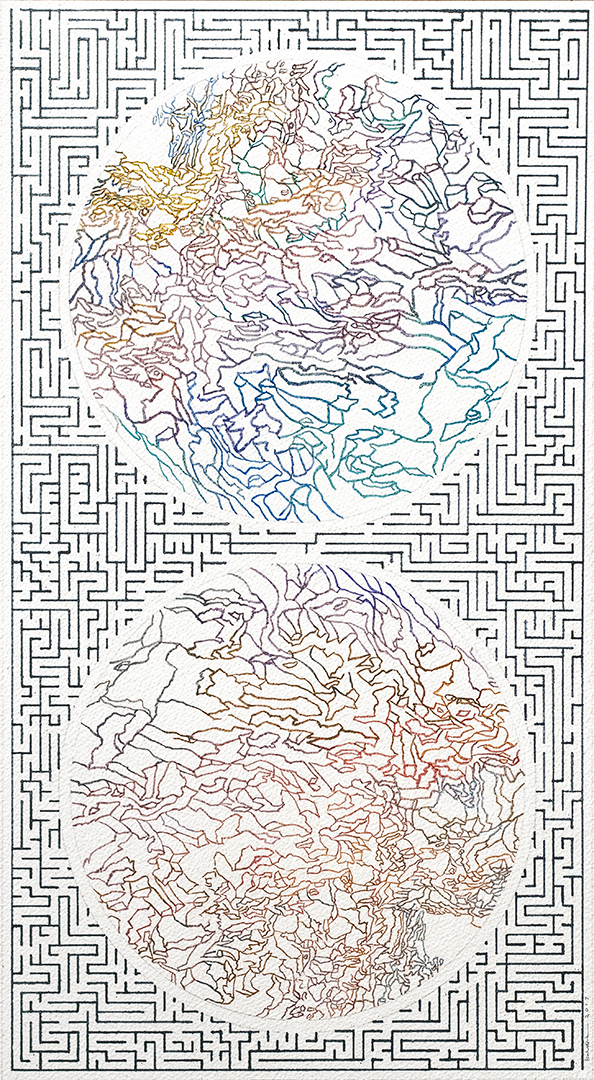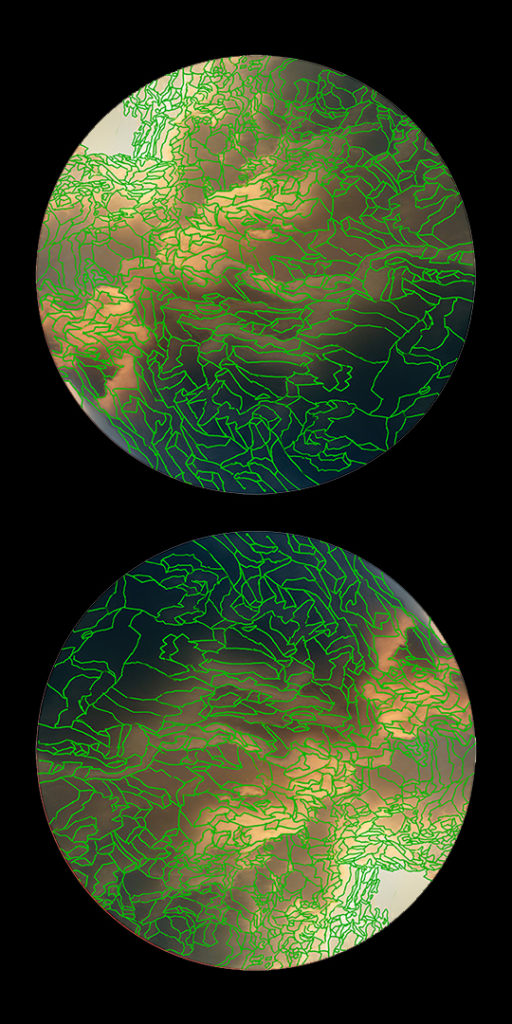 22″ x 12″
22″ x 12″
Watercolor on paper
2017
For as long as I can remember, I have been experiencing a visual sensory phenomenon that I’ve named ‘Cone Theory’ for lack of a better definitive term. Concentric lines, which look oddly similar to the symbol for WiFi, form patterns on every single surface. Perhaps I will make an entry that further explains its practical applications in the future. For the meantime, I’ll discuss the taming this minor inconvenience.
This painting attempts to reverse-psychologize my sensory input. By putting the lines exactly where I wanted them, I kept my brain from drawing them on top of everything as it pleased. To step things up a notch, the approach of the exercise was to find the lines on things with no distinct borders or edges—such as clouds.
 Creating a topographical map is a logical way to transcribe a 3 dimensional object onto a planar surface. These topographical ‘cloud maps’ or ‘cloud projections’ were then transferred onto watercolor paper. On a theoretical level, putting multiple physical boundaries on something as ephemeral and intangible as a cloud, or enclosing it within borders, manifests an abstract concept such as one’s ‘will’ into the physical world.
Creating a topographical map is a logical way to transcribe a 3 dimensional object onto a planar surface. These topographical ‘cloud maps’ or ‘cloud projections’ were then transferred onto watercolor paper. On a theoretical level, putting multiple physical boundaries on something as ephemeral and intangible as a cloud, or enclosing it within borders, manifests an abstract concept such as one’s ‘will’ into the physical world.
Enclosing these cloud projections in circles ‘contained’ the main idea behind them. The circle is a symbol of perfection, symmetry, skill and control, making it the most appropriate shape to physically demonstrate jurisdiction over one’s senses and self.
Since these original ‘projections’ resembled mazes so much, the finished painting resulted in a complex labyrinth. To emphasize the erratic lines of the cloud topography, I made the lines of surrounding maze areas strictly perpendicular. It was whilst painting in the surrounding lines that I realized that a maze with multiple options to reach the finish line has not been made before. Having multiple solutions for one problem became another distinct feature of this work.
The mirror imaging of the cloud projection suggests that one’s actions in isolation differ from actions when one is within the confines of society. Would one still choose the most complex and ornery path when nobody is looking, or simply choose an easier way since we all end up in the same place anyway?
